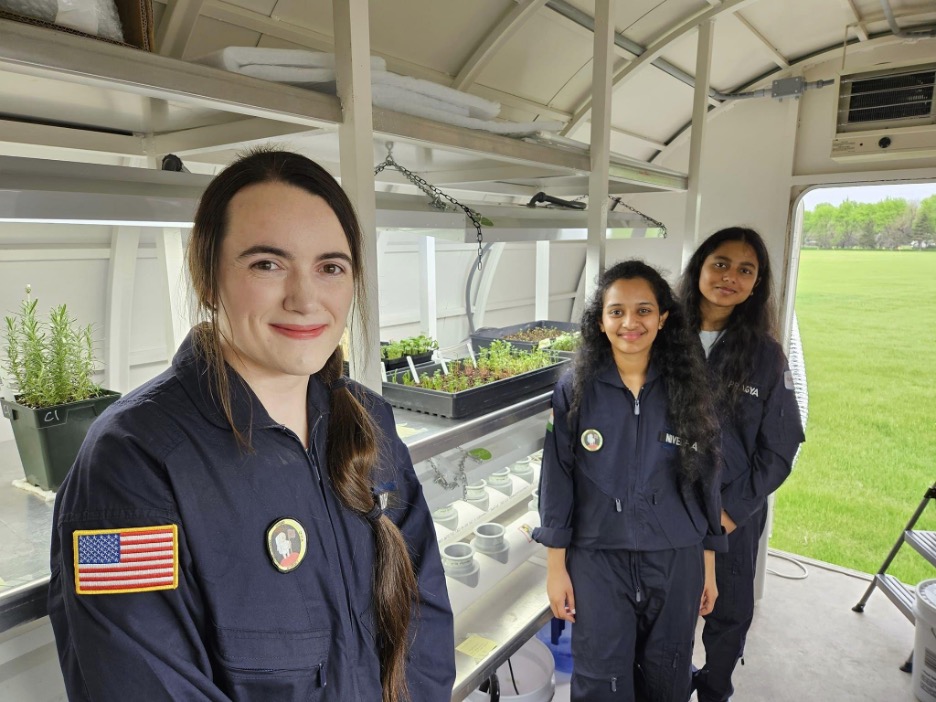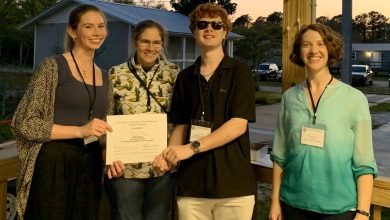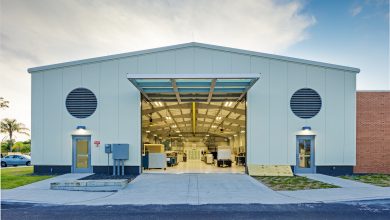Interstellar: Florida Tech Students and Alumna Take on Mars
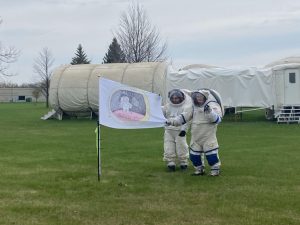
Two Florida Tech students and a recent alumna took on Mars … or at least a simulation of it.
The three women conducted a 14-day analog astronaut mission in May at the University of North Dakota’s Inflatable Lunar/Martian Analog Habitat (ILMAH). The mission came together through the efforts of Florida Tech’s Astrobiological Research and Education Society (ARES) and was a first for the university.
On the mission, named the ARES I/ILMAH XV mission, astrobiology and mathematical sciences student Ruth Nichols served as the commander; applied mathematics and astrobiology student Pragya Jha served as the neuroscience specialist; and Nivedha Karigiri Madhusudhan ’22 M.S. served as the engineering specialist.
“During this mission, we simulated being astronauts living in a Martian base,” Nichols said. “We did research, performed extravehicular activities (EVAs) and had limited contact with the outside world. Our research included studying how our physiology compared to that of astronauts on the International Space Station, our cognitive functioning throughout each day and the duration of the mission, some greenhouse experiments and the effects of isolation on humans.”
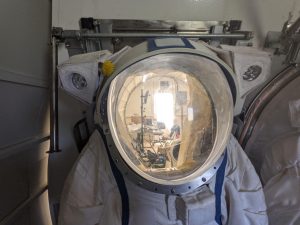
After the crew members were selected, they had weekly meetings to discuss ILMAH, go over their project ideas, draft a mission schedule and review the mission requirements. Crew members needed to earn Federal Aviation Administration third-class medical certificates, design and make their mission patches and flags and order flight suits.
“Analog astronaut missions serve as a major research platform for extraterrestrial space applications,” Karigiri Madhusudhan said. “It gives a chance for students in different fields to know and see how outer space missions are constantly evolving in engineering and technology. Analog missions not only give you a platform for your research but also give you an idea of seeing yourself play the role of an astronaut in terms of being a part of the crew, having an ideal personality and mindset for it, solving problems quickly and being a valuable crew member.”
ARES and Florida Tech plan to continue offering an annual analog astronaut mission at ILMAH. Applications are expected to be available in early fall, and the mission will be conducted in May.
Q&A
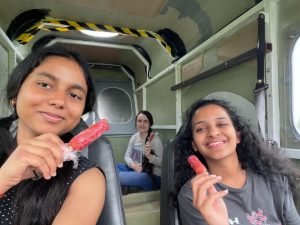
- What are your reflections now that the mission is over?
- Jha: The biggest thing I learned about myself was how quickly I adapted to life inside the habitat. Before ingressing, I was worried about living in a small space with few amenities and not being able to go outside. Yet, after two days into the mission, I was happily living my “new life.” Living in such an isolated space made me forget about my life outside the space, which is a little scary, and I was into the zone of doing my job in the mission.
- Karigiri Madhusudhan: After this mission, I realized the extent to which I could push my limits and do a lot more than I could imagine. I developed a lot of self-confidence. This is because I had a huge responsibility of maintaining an entire experimental system—the habitat—that I had never seen or worked with before. Although there were crew members with me, I still had my share of responsibilities and tasks to do. Secondly, the idea of isolation was quite challenging, even though it was a short period of time. I learned a lot about myself, and I am glad to have had this experience. I also learned how to ration food and resources, manage my time, keep my body active and be a good team worker.
- Nichols: I think one of the biggest things I learned from the analog mission is how to work with others. We were three people stuck inside a tin can together for two weeks, so communicating with each other and resolving conflicts and concerns was an essential part of the mission—more than I thought it would be. I learned about myself, including how I act under pressure and in the face of uncomfortable situations. Also, I didn’t think that the isolation would bother me that much, but about a week into the mission I was beginning to miss the outside and seeing people. Since we couldn’t see much of the outside, it was hard to tell what time of day it was, which slightly threw off my circadian rhythm and sleeping schedule.
- What was your favorite part of the mission?
- Jha: Seeing the plants slowly grow in the greenhouse! We planted seeds like cucumber, basil, coriander, radish, peppers, spinach and many more. Watering them every morning and night and seeing their growth each day was insane—they grew about 1-2 centimeters each day in the hot greenhouse. Near the end of the mission, we harvested many of our microgreens and ate them—they were tasty, and it was nice to see the culmination of our hard work.
- Karigiri Madhusudhan: I enjoyed learning and working with the spacesuit prototype. My favorite part was my EVAs, and I saw myself getting better at it with practice! My second favorite task was building the 3D printer and seeing it print. It definitely made me happy, and I felt accomplished.
- Nichols: Doing EVAs! I was so excited to put on an EVA suit for the first time. It was really fun to try to move around in a spacesuit and explore the “Martian” surface, and I was sad when we had to go back inside and take off the spacesuits at the end of each EVA. We would sometimes pick flowers on our EVAs.

